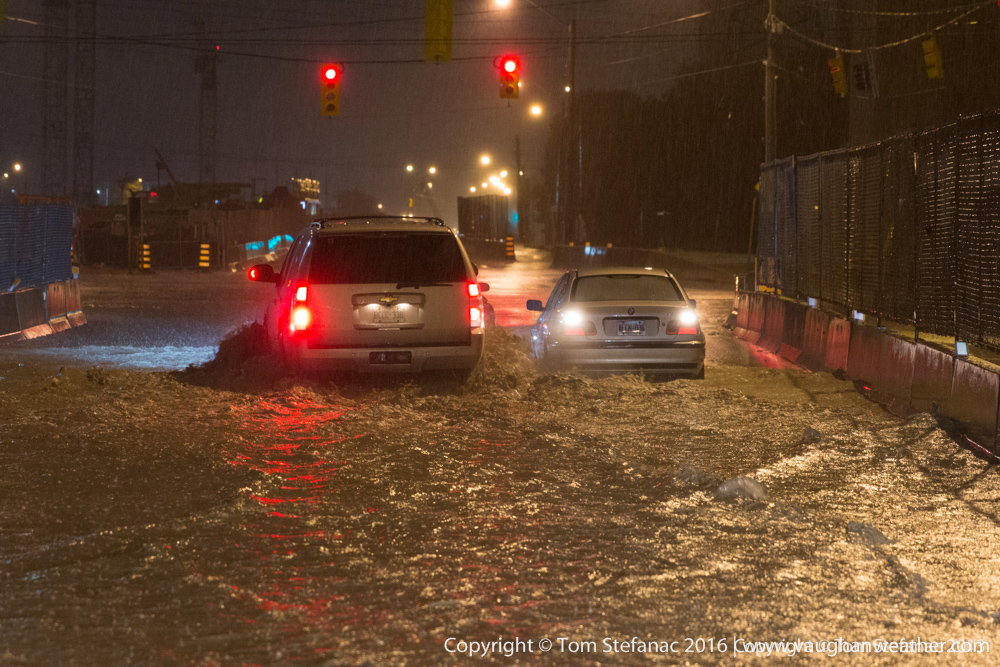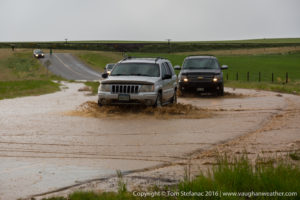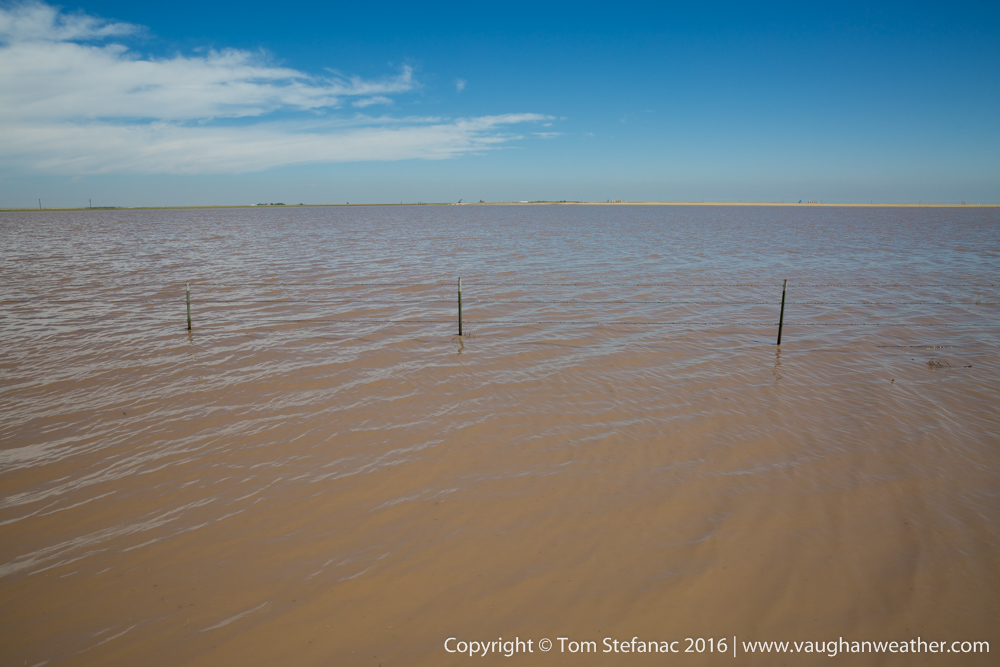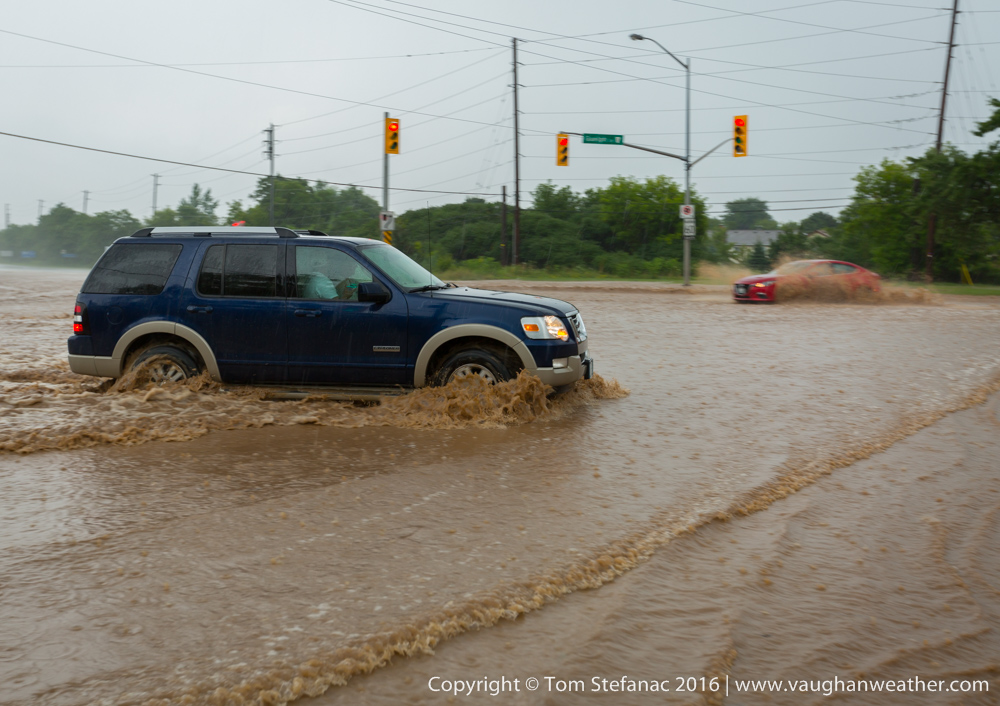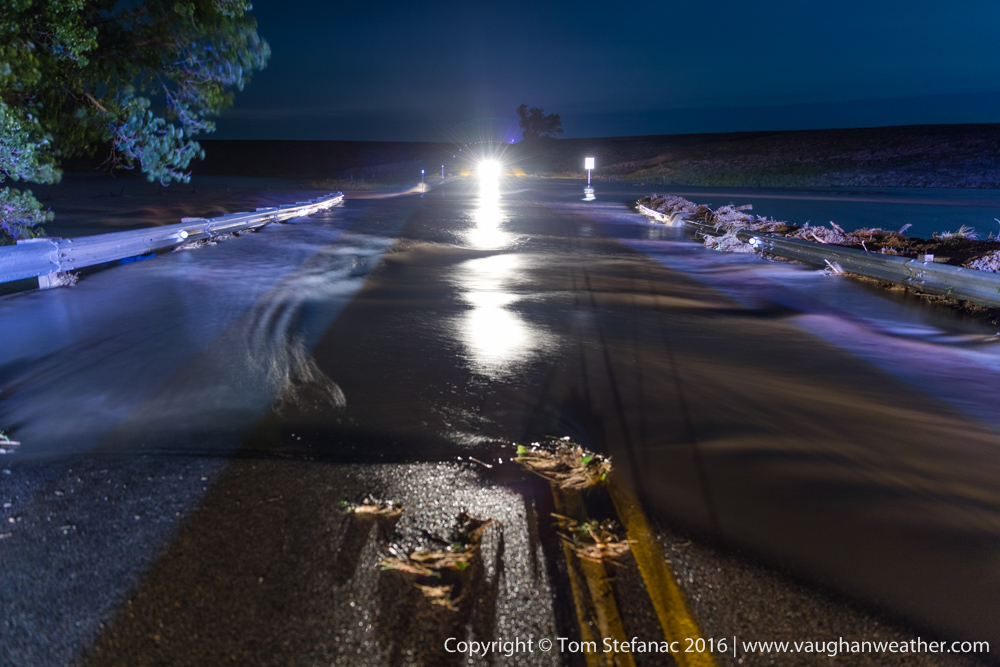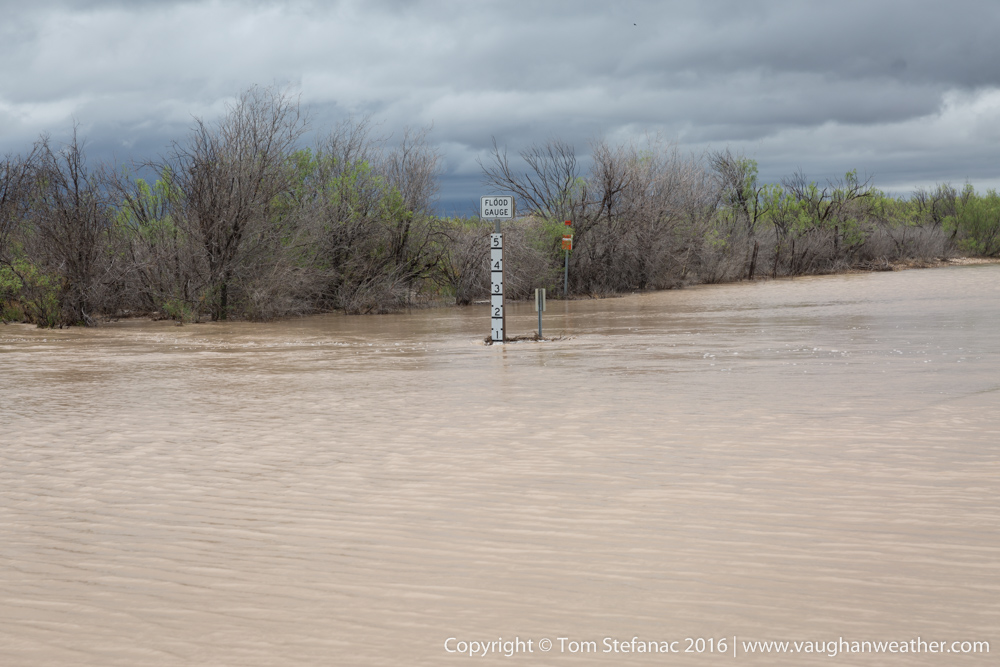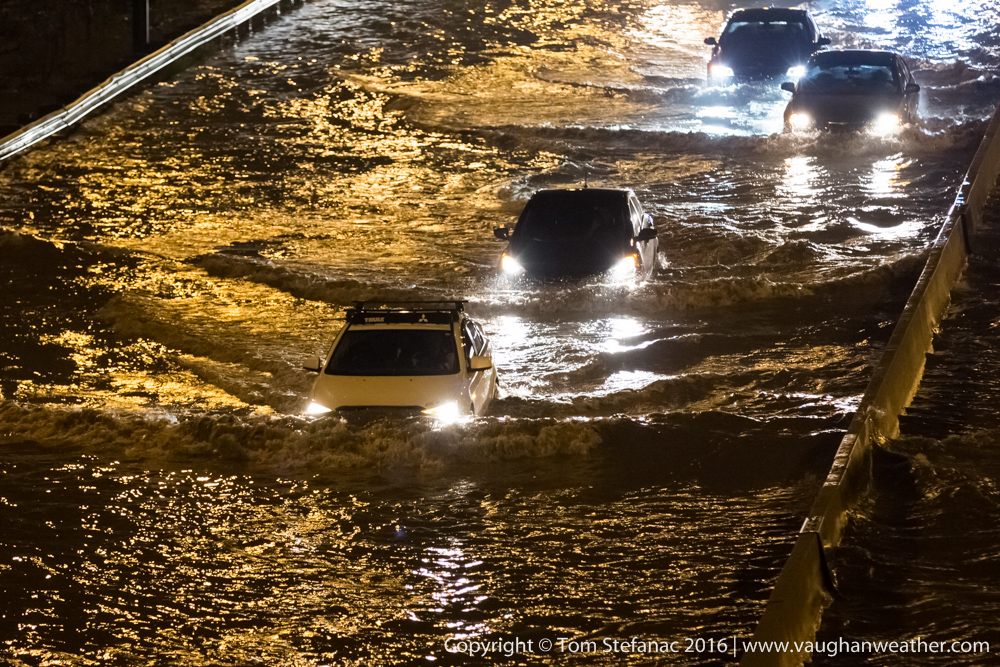Posts Tagged: education
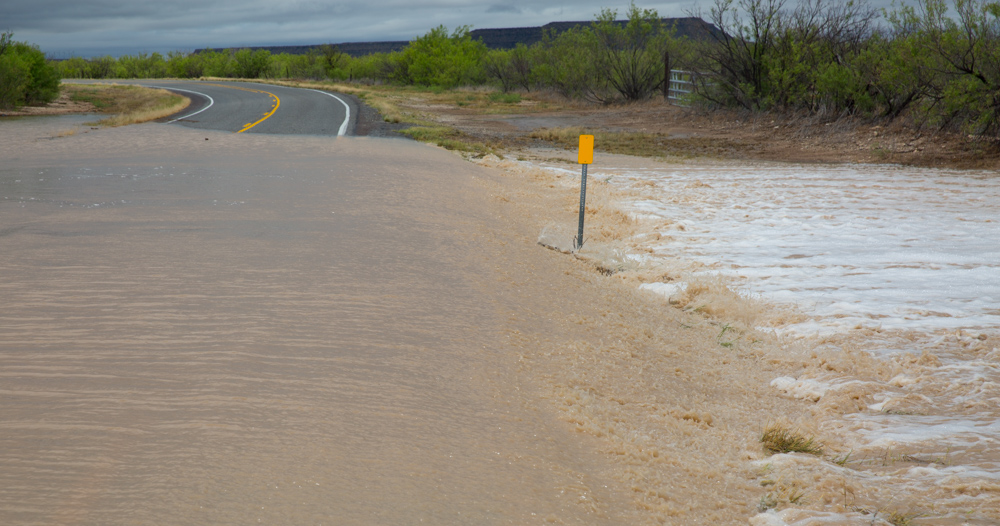
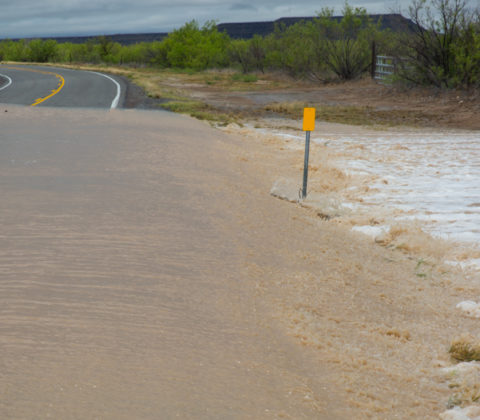
Flash Flooding – Staying Aware
Flash flooding is often an overlooked but very real danger with virtually any thunderstorm. What makes flash flooding so unique is the speed with which it can occur, often catching people by surprise. What makes it even more dangerous is that you don’t really need a special storm to produce it. Your average garden variety thunderstorm can produce flash flooding if the conditions are right.
So what’s the difference between flooding and flash flooding?
Flooding is basically the process where water covers land that is usually dry. We often hear about channel flooding (large rivers) on the news where snow melt, an ice jam or days of heavy upstream rainfall cause a river to overflow its banks. These types of flooding events are generally slow in nature and to some degree well predicted with a good estimate of peak flood levels.
Flash flooding on the other hand is any form of sudden flooding. It’s often very poorly forecasted with little to no warning and extremely difficult to model or predict. Flash flooding usually involves channel flooding (rivers, creeks, tributaries), urban flooding (failed or over capacity infrastructure) and areal flooding (ponding, pooling).
There’s no easy way to know when or where flash flooding will occur or how serious the situation will become. But there are certain elements that make an environment more prone to flooding.
The first factor flash flooding requires is heavy, persistent rainfall. A storm that is slow moving or one which back builds is a prime storm to produce flash flooding. Rainfall rates in storms can easily reach and exceed 60mm/hr or greater, and to put that into perspective that’s 1mm of rainfall per minute on the low end! In fact most thunderstorms actually produce peak rainfall rates of 100 to 300 mm/hr or about 1.6 to 5 millimeters of rain per minute. That’s why you can easily get 20 millimeters of rainfall in as little 10 to 15 minutes as a storm passes over. So if a storm produces these high rainfall rates over a specific area for any length of time flooding will occur.
The second factor is the layout of the land and it’s ability to absorb water. For example, the rainforest sees so much rain from heavy thunderstorms it’s basically an environment that’s adapted to absorb all that moisture without just flooding and falling apart. On the other hand, deserts are known as high risk areas with even a small amount of rain leading to potentially catastrophic flooding because the soil simply is not good at absorbing water.
Hilly and flat areas have their own problems. Flat areas experience areal type flooding where water will build in say a field forming an impromptu pond and then suddenly move as a large mass (known as overland flow) from one area to another (very dangerous!). This type of flooding can strike extremely quickly with virtually no warning and very large masses of water stretching long distance can easily cover kilometers of roadway in a single swoop. Hilly or mountainous areas exposed to flash flooding pose the threat of mud and landslides which can occur with no warning and move very quickly destroying everything in their path. Channel flooding which occurs in mountainous or hilly terrain is also extremely dangerous with flood waters achieving high velocities due to large angular slopes. It’s important to remember that in all landscapes benign waterways can potentially become raging rivers.
The third factor with flash flooding is the current state of the environment with regards to saturated soil, water table depth and pre-existing water levels in channels. An environment that is already saturated with high water tables is very susceptible to flash flooding.
What are the dangers of flash flooding?
Everything from the loss of property to death is a potential result of flash flooding.
What do I do if I’m caught in a flash flood?
Turn around, don’t drown! Prevention is the best cure, if the roadway in front of you is flooding or you see that things are flooding around you, get out of the area and seek higher ground if possible. Most people who get into trouble in flash floods attempt to cross flooded roadways.
This video below is a great example of why crossing a flooded roadway is bad, dangerous idea!
Fortunately for this individual, they we’re okay, but it’s a great video that demonstrates why things aren’t always as they appear. It’s easy to look and assume that there is a road under that water, except if your assumption is wrong, you’re in big big trouble! The safest way to get out of a jam is not to get in one in the first place. If you see the road ahead is flooded, slow down, stop and turn around. If you start driving into a flooded roadway and decided you want out, the safest way out is the same way you got in there, just backup if you can safely do so.
I’m trapped in my car!
If you find yourself in a position where you’re trapped on a flooded roadway, don’t panic. Stop, breathe, assess the situation. Firstly, grab your cell phone and keep it away from water. Second, roll down at least one window & unlock all your doors so you can easily escape your vehicle if need be (it evens out the pressure). Now assess the situation, Where am I? How fast is the water moving? How fast is it rising? How deep does it look? Can I stay dry? Is there high ground/safety nearby? What’s around that I can try to hold onto? Do I have anything in here that’ll help me float?
If the water is calm and appears waist deep, you’re probably okay. Try to stay dry, call for help on your phone and follow any instructions. If you can swim, and feel confident wading through the CALM water to an elevated portion of land and it’s warm enough where HYPOTHERMIA will not be an issue then do so very carefully but wholly at your own discretion.
If the water is calm but rising rapidly, call 911 immediately! They will likely either tell you to stay with your vehicle unless you can reach safety quickly without getting into further trouble. Don’t panic, if you have anything around you that floats or will help draw attention, USE IT.
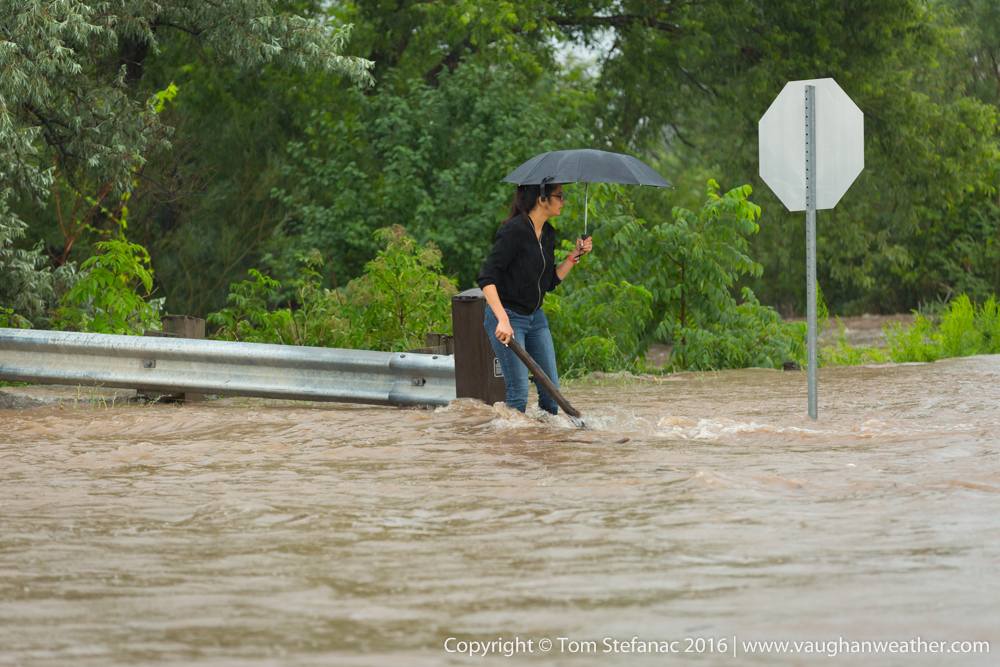
A woman dangerously attempts to cross a flooded roadway with fast moving water in Burlington, Ontario
If the water is flowing quickly and rising call 911 immediately. You will need to eventually escape your vehicle (assuming it’s being swept away), look for something to hold onto! Call out for help!!! If you’re trapped in the flow, swim with it (not against it) and try to move diagonally towards a shoreline or any area that may allow you to escape or slow down. Conserve energy, if possible try to lay in a position that allows you to float, hold onto anything that may help you safely float and keep calling for help! Even if you don’t see rescuers in your immediate area, they may be just downstream preparing to save you and you’ll need all your energy for rescue! Don’t give up, keep looking for a way out.
If the water is flowing quickly but not rising call 911 immediately. If your vehicle is not being swept away, but the water is moving quickly, STAY PUT. You’re safer not moving and waiting for rescue, if you try and self rescue you may be swept away!!! Try to stay dry, warm, and aware! Follow any instructions 911 gives you. Do not be lured out of the vehicle at all costs, stay put until you are rescued!
I escaped the flood but I’m soaking wet & cold
Take your clothes off immediately (get naked!), hypothermia is a major danger. Try and dry off with towels, seek warm shelter/fresh clothing and emergency medical attention immediately. Allow your body to shiver (it generates heat) and keep standing up. Cold blood returning to your core from extremities such as your feet is very dangerous, standing slows this process and prevents shock.
I’m a bystander, what should I do?
Don’t encourage people to do anything! Call 911 and tell them what you see, who is trapped, where you are. Reassure the trapped individual(s) they’re not alone, help is coming. Keep an eye on them and always have them in sight, be aware of their direction of potential travel downstream and keep an eye on the clock, exact times are very important with rescues and fast moving water. If you can somehow give them something helpful (life-jacket, PFD, pool noodle, etc) be very careful doing so. Don’t try and rescue people, the professionals will do that! You might make it worse. As a bystander the best thing you can do is keep the emergency services aware of the situation as they respond, you have a working phone, the victim may not, keep your phone working. Above all, stay calm, being calm allows for better rationalization. Only offer the emergency services help if asked, don’t go and get in the way!!
Okay, my car stopped running, I’m stuck in water and it’s shallow?
Chances are you choked the intake. Assuming you’re in no position of danger from drowning or anything, DON’T TRY AND START THE ENGINE!!! Your car might be okay, you just need a tow. If you try to start your engine when it’s full of water (hydro locked) you can destroy it. When water gets into your vehicle’s cylinders and you try and start the engine the water does not compress, instead the piston rods BEND since the piston cannot compress the water unlike the gas/oxygen mix normally in there which does get compressed. When the rods bend, bye-bye engine. People make this costly mistake all the time! If you choke your engine on a flooded road, get it towed to a mechanic before you dare attempt to start the engine.again.
